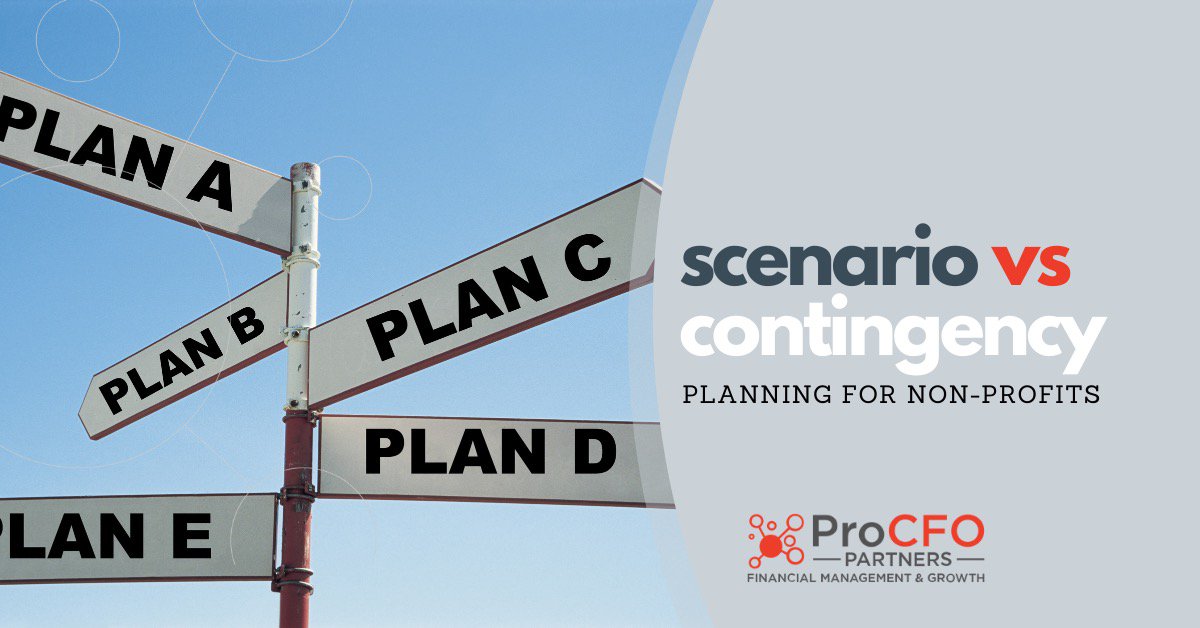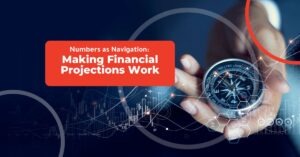Scenario Planning vs Contingency Planning for Not For Profit Organizations
Apr 15, 2021
The 2020 Pandemic showed every business and Not For Profit that things can change quickly and unexpectedly. While the shifts in business have often been extreme and extraordinary in this time, it serves as a meaningful reminder of the importance to be strategically prepared. In this article we’ll explore how Not For Profits can better consider Scenario Planning and Contingency Planning in their forecasting and planning.
What is Scenario Planning for Not For Profits?
Scenario Planning involves looking at financial likelihoods or possibilities and planning around them. “If this happens, and this, then that becomes possible.” Maybe your revenue and operations are tied to a potential election, or some sort of policy shift or change or some sort of government funding. As these situations present opportunity or uncertainty, you scenario plan to accommodate market and economic shifts.
In the nonprofit sector, there’s normally a lag between nonprofit and for profit sectors in the event of an economic downturn of 8-12 months. This means donors will often continue to fund until they start having their own economics impacted. In the nonprofit sector there’s typically, after downturn, a lag of 8-12 months before serious impact. With this delay in mind we encourage nonprofits to do scenario planning that forecasts against that window. What if the market dips this year – what does that mean for you next year? What does it look like if you lose 20% of our revenue? 40% of funding? How will you innovate or operate to minimize impact or maximize opportunities from different scenarios?
What is Contingency Planning for Not For Profits?
Contingency planning, on the other hand, involves being prepared for the unexpected or unlikely – something familiar to all of us by now. In Contingency Planning you’ve created a likely budget or forecast, with funding you feel confident you can depend on. Now the exercise is to determine what ifs. What if you don’t get that funding you were counting on, what will you cut? What are the timelines around making those decisions?
In Contingency Planning you prioritize what you currently have in your budget, that you’re hoping that you will actually be able to action out, and then work out backup plans or alternative ideas. Maybe you don’t do this event that you were planning if the funding you expect doesn’t come in by February. Throughout the year, on a quarterly basis, you’re checking in to make sure that you are hitting your targets and that you’re able to continue down your list of priorities that you are hoping institute.
Innovation and Opportunities for Nonprofits
In both Scenario Planning and Contingency Planning, it’s important to think creatively when issues come up. Rather than throw up your hands and give up if things don’t go expected or recovery is slower than you’d hoped, what can you shift or create or do differently? For some this could involve a pivot, but a better mindset might be innovation, invention to minimize interruption.
2020-2021 saw many Not For Profits invest in new thinking. Rather than cancel the annual gala, it’s been held online. Where the traditional in-person event hasn’t been possible, going virtual still creates connection and community. We can learn from these Contingencies and put them into future Scenarios. For instance, many organizations now understand virtual meetings, or online donor systems or digital classes or activities in ways they never would have had reasons to explore previously. Going forward, new ways of integrating technology into previously “low-tech” events can create new opportunities. Livestream the next in-person gala. Conduct on online silent auction along with the live event. Or, like in the case of one YMCA we’ve worked with, keep going with the popular Zoom Zumba classes because it’s simply easier and more convenient for many people to participate from home rather than travel. This is the stuff of innovation and growth.
Summing Up
Leaders should have a strategic position on both Scenario Planning and Contingency Planning for your Not For Profit. Make sound plans and be prepared, yet be agile and flexible enough to handle the unforeseen quickly and deftly. Remember – maximize opportunities and minimize interruptions as you plan your fundraising, forecasting and budgeting.


